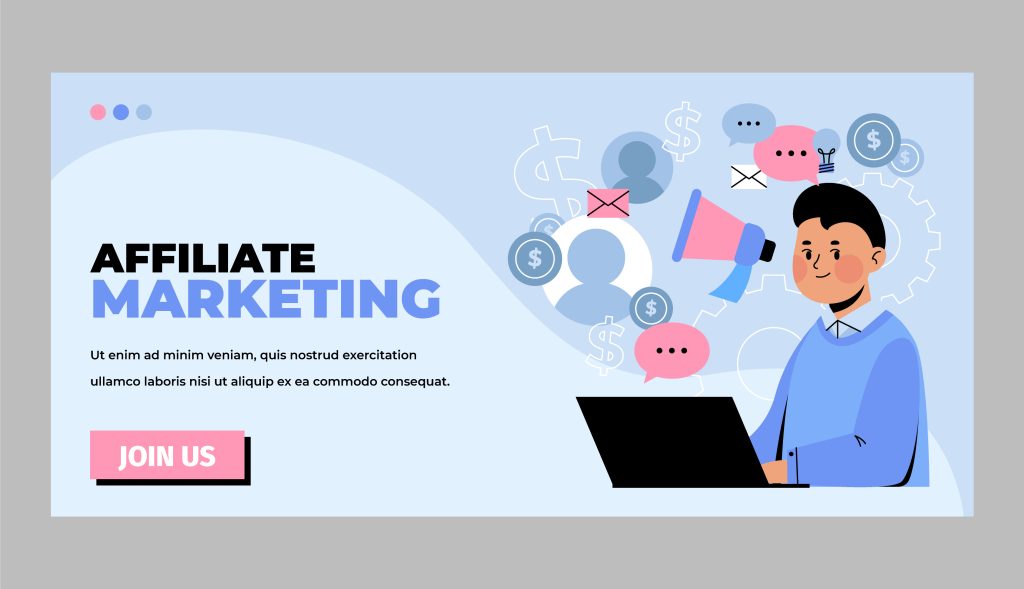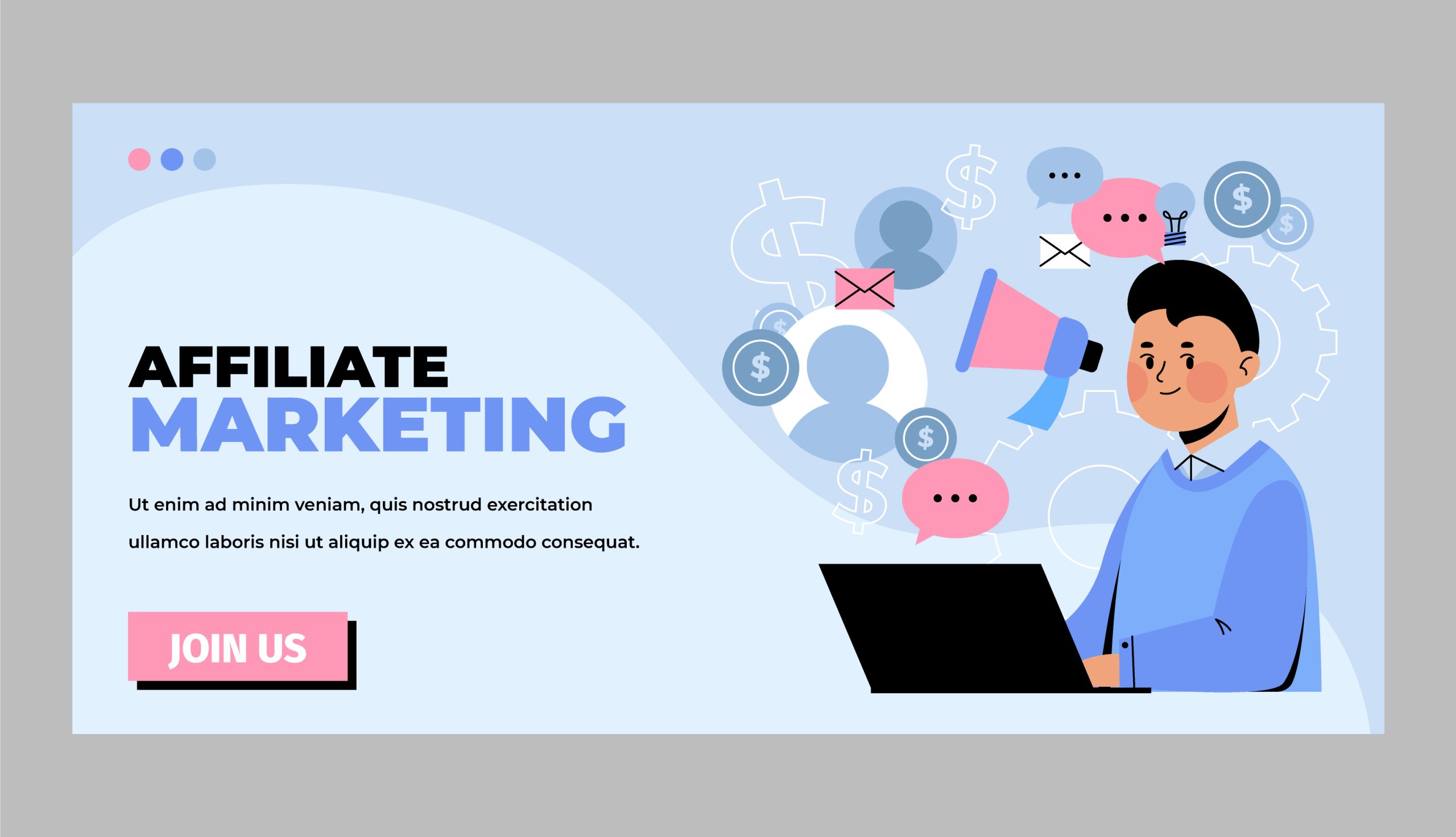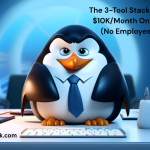Welcome to my article “What Is Affiliate Marketing Without a Website? 5 Legit Ways to Start with No Blog”. So, you’ve heard about affiliate marketing and the promise of making money while sipping iced coffee in your pajamas. Sounds great, right? But then someone says, “Just start a blog!” and you freeze like your Wi-Fi just dropped mid-Netflix binge. Maybe you don’t have the time, the tech skills, or the desire to pour your soul into WordPress. Good news—you don’t need a blog to start affiliate marketing.
That’s right. Affiliate marketing without a website isn’t just possible—it’s thriving. There are plenty of creative, low-barrier ways to dive into affiliate marketing without ever touching a domain name. Whether you’re more comfortable making TikToks, sliding into DMs, or sending emails (legally, of course), there’s a strategy out there for you. And no, this isn’t one of those “just spam links everywhere” guides. We’re talking about legit methods that work in 2025 and beyond.
In this post, we’ll break down five real ways you can start affiliate marketing today—no blog required. From social media and YouTube to email marketing and online communities, you’ll see how others are doing it and how you can, too. So, if you’re ready to earn commissions without writing 1,000-word blog posts about toaster ovens, let’s dive in. Spoiler alert: you might even have everything you need to start already.
Proven Formula for $50-$100 Daily Income with 0 COST – Watch This FREE Video >>

🟦 Leverage Social Media to Promote Affiliate Links
If you’ve got a phone, a bit of Wi-Fi, and at least one social media account you haven’t rage-quit yet, congratulations—you’ve already got everything you need to start affiliate marketing. No blog? No problem. Social media is like the modern-day town square… except everyone’s yelling about skincare routines and kitchen gadgets instead of politics (okay, sometimes politics too).
🚀 Why Social Media Works for Affiliate Marketing
People don’t go to Instagram, TikTok, or Pinterest to read 3,000-word blog posts. They go there to see, scroll, and shop—often without realizing they’re being sold to. That’s your golden opportunity. Social media lets you build trust, show personality, and casually recommend products in a way that feels like a friend’s suggestion rather than a sales pitch.
Plus, it’s free. And let’s be honest, we all love free.
📱 Where to Share Affiliate Links (No Website Needed)
1. Instagram:
- Add your affiliate link to your bio using a free tool like Linktree or Beacons.ai.
- Post short reviews via Reels or Stories.
- Use carousel posts for “Top 5 Product” style content.
2. TikTok:
- Viral video + catchy sound + honest product review = affiliate goldmine.
- Mention “link in bio” and redirect viewers to your landing page or direct affiliate offer.
3. Pinterest:
- Create pins for blog-style visuals: think “10 Gifts for Coffee Lovers” with affiliate links behind each pin.
- SEO your pin titles and descriptions.
4. Facebook:
- Share product recommendations in relevant groups (add value first!).
- Use your personal profile to tell product stories and link in the comments.
5. Twitter/X:
- Use threads to tell a short story leading to a product recommendation.
- Add affiliate links with proper disclosures like “#ad” or “affiliate link.”
💡 What to Post (Even If You’re Shy or New)
Not an influencer? No problem. You don’t need 50k followers and perfect lighting. What you need is authenticity and a niche.
Some content ideas to start with:
- “What I Bought on Amazon This Month (And Actually Loved)”
- “3 Products That Saved My Morning Routine”
- “Affordable Home Office Must-Haves Under $30”
- “Before vs. After Trying [Product Name]” (great for TikTok or Reels)
Don’t be afraid to get creative. The more relatable and useful your content, the better your chances of getting clicks (and commissions!).
✅ Tips to Maximize Your Affiliate Earnings on Social Media
- Be niche-specific – People trust experts. Be the go-to person for travel gear, pet toys, or budget tech.
- Use shorteners/tracking tools – Try Bit.ly or PrettyLinks to make links look clean and track performance.
- Always disclose – Not just because it’s the law (hi, FTC), but because honesty builds trust.
- Engage with your audience – Respond to comments and DMs. The more real you are, the more they’ll click.
🔄 Real Talk: Consistency Over Virality
You don’t need a viral hit to earn your first affiliate commission. Just keep showing up. Be helpful, be honest, and treat your followers like friends—not customers. Build trust first, the money follows.
📹 Start an Affiliate Marketing YouTube Channel
If you’ve ever fallen down a YouTube rabbit hole and ended up watching a 20-minute review of a toothbrush (that you now have to buy), congratulations—you’ve already experienced the power of affiliate marketing in video form.
The beauty of YouTube? You don’t need a blog, you don’t need to go viral overnight, and you definitely don’t need a fancy studio setup with mood lighting and cinematic B-roll. What you do need is a camera (your phone works), some enthusiasm, and the ability to say, “Hey, this product is pretty cool—here’s why.”
🧠 Why YouTube Is a Goldmine for Affiliate Marketers
YouTube is the second-largest search engine in the world (owned by Google, no less), which means people are constantly searching for things like:
- “Best wireless earbuds under $50”
- “How to fix back pain while working from home”
- “Is this [weird-looking gadget] actually worth it?”
When your video answers those questions—and includes a helpful affiliate link in the description—you’re basically turning casual browsers into commission-generating ninjas.
Proven Formula for $50-$100 Daily Income with 0 COST – Watch This FREE Video >>
Plus, YouTube content has longevity. A video you post today can still bring in views (and money) years from now. Try getting that kind of ROI from a tweet that disappears in 10 minutes.
🎬 What Kinds of Videos Work Well?
No need to reinvent the YouTube wheel. Here are some proven video formats that play nicely with affiliate links:
- Product Reviews: Honest opinions that help people make buying decisions. Add affiliate links in the description and say, “Check the link below for more info.”
- Unboxings: People love watching others open things. Weird, right? But unbox it, react to it, and link it.
- Tutorials/How-Tos: Show how to use a product (or software), then link to it. “How I use [tool] to edit videos faster” is a great hook.
- Comparison Videos: “iPhone vs. Samsung: Which One’s Worth Your Money?” People eat up side-by-sides before buying.
- Listicles: “Top 5 Budget Gadgets That Actually Don’t Suck” — add multiple affiliate links in one video = more chances to earn.
🛠️ Pro Tips for Affiliate Success on YouTube
- Always link in the description: And make sure you use clear call-to-actions like “Check it out here” or “Grab yours below.”
- Disclose your links: Transparency = trust. Add a quick disclaimer like, “Links are affiliate links, which means I may earn a commission at no extra cost to you.”
- Use keyword-rich titles: Think like a buyer. Title your video like what someone would actually search for.
- Thumbnails matter: You don’t need Photoshop skills—just make sure it’s clear, clickable, and not too clickbaity (unless you’re really committed to the drama).
🐢 No, You Don’t Need 1,000 Subs to Get Paid
A common myth: “I have to be monetized before I can make money on YouTube.” Nope. Even with zero ads running on your channel, you can still earn commissions from your affiliate links. That means your very first video could make money while you sleep. (Seriously—affiliate marketing is one of the few places where this cliché is actually true.)
🚀 Final Thought: Done Is Better Than Perfect
Don’t wait until you have a fancy mic or flawless on-camera presence. Start with what you have, learn as you go, and improve over time. You’d be surprised how many “ugly” videos make great money. What matters is value, not Hollywood vibes.
So go ahead—hit record, upload your first video, and put your affiliate links to work. Your future self (and bank account) will thank you.
📧 Use Email Marketing with Free Landing Pages
Think affiliate marketing without a website is impossible? Think again. If social media is the flashy party, email marketing is the quiet coffee date that actually converts. It’s personal, direct, and—best of all—you don’t need a blog to make it work. All you need is a free landing page, an email list, and something useful to say (preferably more exciting than, “Hey, buy this!”).
Let’s be real: email marketing might not seem as sexy as TikTok dances or YouTube unboxings, but it’s where the money often actually happens. Why? Because people check their inboxes like their lives depend on it. If your email’s in there, you’ve got their attention—and their attention can turn into clicks, commissions, and ka-ching.
🧰 Step 1: Set Up a Free Landing Page
No website? No worries. There are plenty of platforms that let you create sleek, simple landing pages for free—no coding, no tech headaches. Try:
- ConvertKit (free tier includes landing pages)
- MailerLite
- Systeme.io
- GetResponse
Just pick a template, write a few persuasive lines about your lead magnet (more on that in a sec), and boom—you’ve got a place to collect email addresses.
🧲 Step 2: Offer a Juicy Freebie (Lead Magnet)
People won’t just hand over their email because you asked nicely. You’ve gotta bribe them… ethically, of course. That’s where a lead magnet comes in.
Great lead magnet ideas:
- A cheat sheet (e.g., “5 Budget Tech Tools for Content Creators”)
- A mini eBook or guide
- A free email course
- A downloadable checklist or template
Make sure it’s useful, targeted, and solves a tiny problem quickly. Bonus points if the lead magnet naturally leads into the affiliate product you’re promoting.
💌 Step 3: Nurture with Value-Packed Emails
Once they’re on your list, it’s not time to blast them with links like a digital bazooka. Nope. It’s about building trust first.
Use an email sequence like this:
- Welcome Email: Introduce yourself, deliver the freebie, say “hey!”
- Value Email #1: Teach something helpful related to your niche
- Value Email #2: Share a story or personal experience
- Promo Email: Introduce the affiliate product with benefits and a CTA
Keep your emails light, friendly, and helpful—like chatting with a smart friend over coffee (the one who gives great recommendations and never yells in all caps).
🔗 Add Affiliate Links Smartly
Affiliate links go in two places:
- In the email copy: Use a clear CTA like “Click here to check it out”
- On the landing page: If you’re recommending something before they even opt in
Pro tip: Use link shorteners or tracking tools (like Bitly or Pretty Links) to keep your URLs clean and see what’s getting clicks.
And don’t forget the FTC disclosure line:
“This email contains affiliate links, which means I may earn a small commission if you purchase through my link—at no extra cost to you.” Transparency = trust.
📈 Why This Works (Even for Beginners)
Email marketing feels small at first—maybe 5 subscribers and your mom—but it scales. You own your list. No algorithms. No random bans. And once your system is in place, it works on autopilot.
You’re not just selling a product. You’re building a relationship, and people buy from those they trust.
✅ TL;DR
- Use free tools to build landing pages and email lists
- Offer a lead magnet that aligns with your affiliate niche
- Send value-first emails with subtle but strategic affiliate promos
- Be human, helpful, and not annoying
Even if you don’t have a blog or YouTube channel, you can build a mini email empire that pays you over and over again—one click at a time.
💬 Join Online Communities and Add Value (Before Sharing Links)
Let’s get one thing straight: jumping into a Facebook group or Reddit thread and immediately dropping your affiliate link is the digital equivalent of crashing a party and yelling, “BUY MY STUFF!” Spoiler alert: you’re getting kicked out. Fast.
But if you genuinely show up, help people, and act like a human being (not a sales bot), online communities can be a goldmine for affiliate marketing — even if you don’t have a website, blog, or followers.
The key? Give first, link later.
🧑🤝🧑 Where Can You Find These Communities?
Good news — they’re everywhere:
- Facebook Groups: Search for niche-related groups like “Budget Travel Hacks” or “Home Gym Enthusiasts.”
- Reddit: Subreddits like r/FrugalLiving, r/SideHustle, r/Fitness, etc., are packed with potential buyers who love deep discussions.
- Quora: People ask questions. You give great answers. Simple.
- Discord Servers: Some niche servers (like for gamers or crypto folks) welcome helpful recommendations.
- Niche Forums: Yes, they still exist. From parenting to tech to obscure hobbies, there’s a forum for everything.
Just remember: each of these has rules. Read them. Respect them. Or risk the digital banhammer.
🧠 The “Give First” Strategy (aka: Play It Smart)
Before you even think about sharing a link, spend time engaging:
- Answer questions thoughtfully
- Share personal experiences
- Offer resources or advice (without pitching anything)
- Upvote, comment, and build credibility
Once people start to recognize you as a real contributor, then — and only then — can you subtly introduce affiliate products that truly help.
For example:
“Someone asked earlier about budget meal planning. I’ve actually been using this printable meal planner [affiliate link] for a few months — it’s helped me cut grocery bills in half. Hope it helps!”
That’s way better than:
“CLICK THIS LINK NOW! $$$”
🔒 Trust is the Currency. Don’t Waste It.
Online communities are built on trust, and once you burn it, you’re toast. Focus on being helpful first. If your advice solves a problem, people will naturally be curious about what you recommend — and that’s where your affiliate link fits naturally into the conversation.
Proven Formula for $50-$100 Daily Income with 0 COST – Watch This FREE Video >>
Think of it like this: if you wouldn’t say it out loud to a stranger at a dinner party, don’t say it online either.
🧰 Bonus Tip: Create a Helpful Resource First
If the community doesn’t allow direct affiliate links (many don’t), here’s a ninja workaround:
- Create a free resource — like a Google Doc or mini guide
- Include your affiliate links inside that resource
- Share the doc when relevant:
“I put together a short guide on tools that helped me get started. Happy to share if anyone wants it.”
Boom. You’re sharing value, not just a link. And value is what keeps you in the group (and off the admin’s naughty list).
✅ TL;DR
- Join niche communities (Facebook, Reddit, Quora, etc.)
- Read the rules — don’t get banned!
- Add genuine value before sharing anything promotional
- Only share affiliate links when they solve a specific problem
- Build relationships, not just clicks
The moral of the story? Don’t be a spammer. Be a helper. The sales will follow.
💸 Use CPA Networks That Don’t Require a Website
So, you’re trying to make money online, don’t have a website, and still want to get in on the affiliate game? Cue CPA marketing — the scrappy cousin of affiliate marketing that pays you when someone takes an action, not necessarily when they buy something. And the best part? Some CPA networks don’t even require a website to join. 🎉
Yes, you read that right. No blog, no domain, no long “About Me” page with a photo of you sipping coffee on a laptop in Bali. Just real offers and real commissions for real actions — like filling out a form, downloading an app, or entering an email.
🧠 Wait… What Exactly Is CPA?
CPA stands for Cost Per Action (or Acquisition), and the “action” can be almost anything:
- A user signs up for a free trial
- Downloads a mobile app
- Submits their email or phone number
- Requests a quote
- Watches a video
You get paid just for getting people to take the action. No need to hard-sell anything. It’s kind of like affiliate marketing on easy mode — as long as you promote legit offers the right way.
🔍 CPA Networks That Welcome Non-Website Owners
Here are some beginner-friendly CPA networks that don’t require a website to get started:
- MaxBounty – They often accept newbies if you give a good application (hint: say you’ll promote via social media or email).
- CPAlead – No website? No problem. You can get instant approval and start promoting mobile and app install offers.
- AdWork Media – Offers global campaigns and accepts social media influencers, freelancers, and YouTubers.
- MyLead – Great for international offers and beginner-friendly with tons of training.
- OGAds – Focuses on mobile CPA offers (think free iPhone giveaways, app installs, etc.).
🛑 Pro Tip: When applying, be honest but strategic. Explain how you plan to promote offers (e.g., TikTok, Instagram, YouTube Shorts, or email marketing). Showing that you have a plan goes a long way in getting accepted.
🚀 How to Promote CPA Offers Without a Website
No blog? No sweat. Here’s how to hustle CPA offers like a pro:
- TikTok & Reels: Create short, snappy videos with trending hooks. Use a link-in-bio tool like Linktree or Beacons to share your CPA offer.
- Pinterest Pins: Yes, it still works! Link pins to landing pages with your offer.
- Quora Answers: Drop helpful answers and direct readers to a helpful freebie tied to a CPA link.
- Email Marketing: Use landing pages (like ConvertKit or Systeme.io) and capture leads with a lead magnet that naturally leads into your CPA offer.
- Reddit/Discord: Just tread carefully — don’t spam. Engage and recommend only where it makes sense.
⚠️ Don’t Be “That Marketer”
Look, CPA marketing is powerful, but it has a bad rep because some people treat it like a spam Olympics. Don’t be that person.
Avoid:
- Posting sketchy offers in random Facebook groups
- Mass DM-ing strangers
- Using fake reviews or misleading headlines
- Ignoring platform rules (nothing gets your account banned faster)
Focus on solving real problems with your offers. You’ll build trust, avoid bans, and earn more in the long run.
✅ TL;DR
- CPA = Cost Per Action (you get paid when someone takes a simple action)
- No website? No problem — join CPA networks that accept social or email marketers
- Promote via TikTok, Instagram, email, or forums with smart strategies
- Be ethical. Spam gets you nowhere — value gets you paid
Bottom line? With CPA networks, you don’t need to build a blog empire. Just find the right offer, the right audience, and show up in the right way — even if it’s just with a phone and a free landing page. Now that’s modern-day hustle.
🎯 Conclusion: No Blog? No Problem!
Who said you need a website to start affiliate marketing? Probably someone trying to sell you web hosting. The truth is, affiliate marketing is less about having a blog and more about knowing how to connect the right audience with the right product — at the right time. And guess what? You can totally do that without owning a single domain name.
Let’s do a quick recap of your shiny new toolkit:
- 💬 Online Communities – Be the helpful human, not the lurking spammer. Add value, build trust, then sprinkle in your affiliate magic.
- 📱 Social Media – Instagram, TikTok, Pinterest, Twitter… wherever your people hang out, show up, serve, and link (ethically).
- 🎥 YouTube Channel – Become the face (or voice) of your niche. No blog required — just a camera, consistency, and a little charisma.
- 📧 Email Marketing + Free Landing Pages – Capture leads like a pro with free tools, lead magnets, and emails that convert quietly.
- 🛒 Affiliate Marketplaces with Built-In Traffic – Let the platforms do the heavy lifting. You just need a little strategy and a lot of hustle.
Starting affiliate marketing without a website isn’t just possible — it’s smart if you’re on a budget, testing the waters, or allergic to WordPress.
So stop waiting for the “perfect setup” and start with what you have — your phone, your voice, your ideas. Consistency beats perfection every time.
And if someone asks how you got started without a blog, just wink and say, “I read this cool article that laid it all out. Want the link?”
Proven Formula for $50-$100 Daily Income with 0 COST – Watch This FREE Video >>
Thanks a lot for reading my article on “What Is Affiliate Marketing Without a Website? 5 Legit Ways to Start with No Blog“ till the end. Hope you’ve helped. See you with another article.










